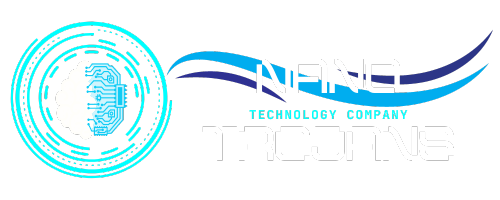Problem Definition and Analysis
Researches in the area of the smart plant watering system have identified the problem of maintaining the right level of moisture in the soil that is essential for the proper growth of plants in a greenhouse system. The existing ways of watering that are used today, like running too many times or giving insufficient water, can make a bad situation for the health and growth of the plants. Beyond that, it is not only the hard and ineffective manual monitoring and watering that involve lot of effort but also the poor water conservation techniques with constant running of the water sprinklers, which are very inefficient. The objective of the smart watering system is to move away from the traditional way of automation and be replaced with real-time sensor data so that plants will be supplied with precisely the necessary amount of water while the effective use of water will reduce the effort that people do.
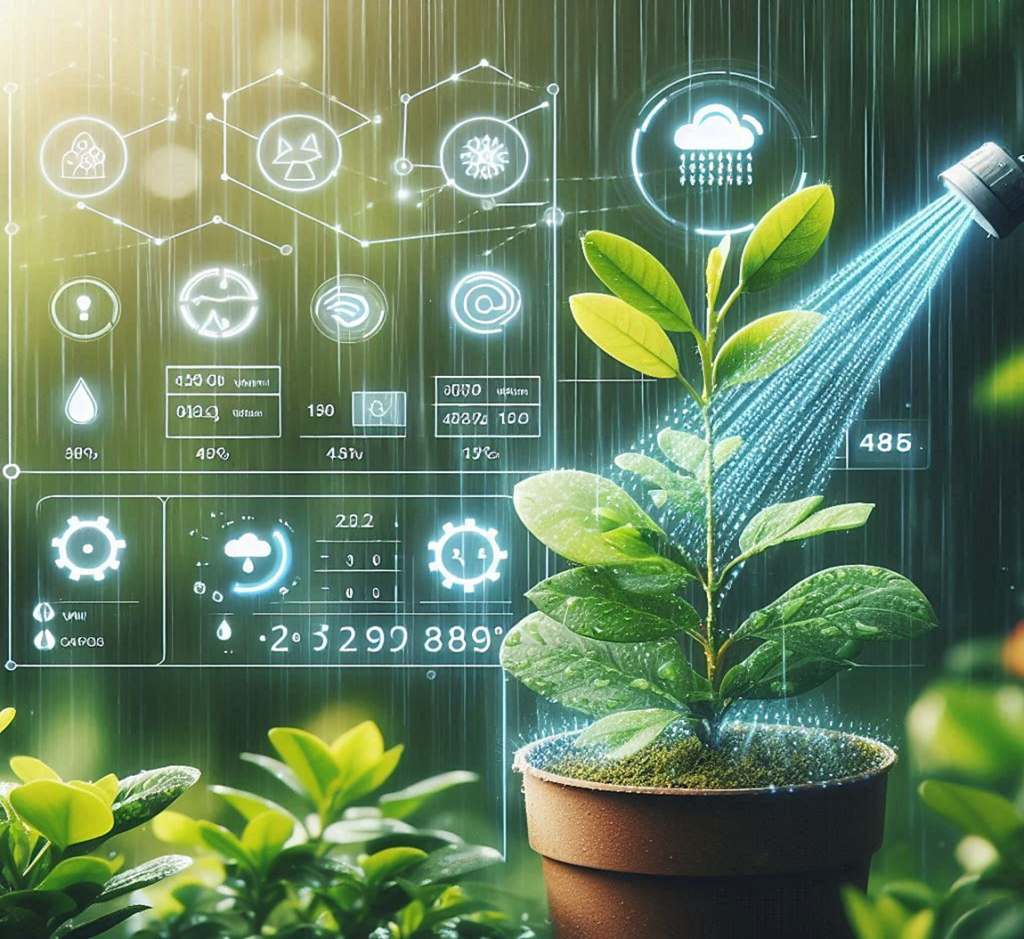
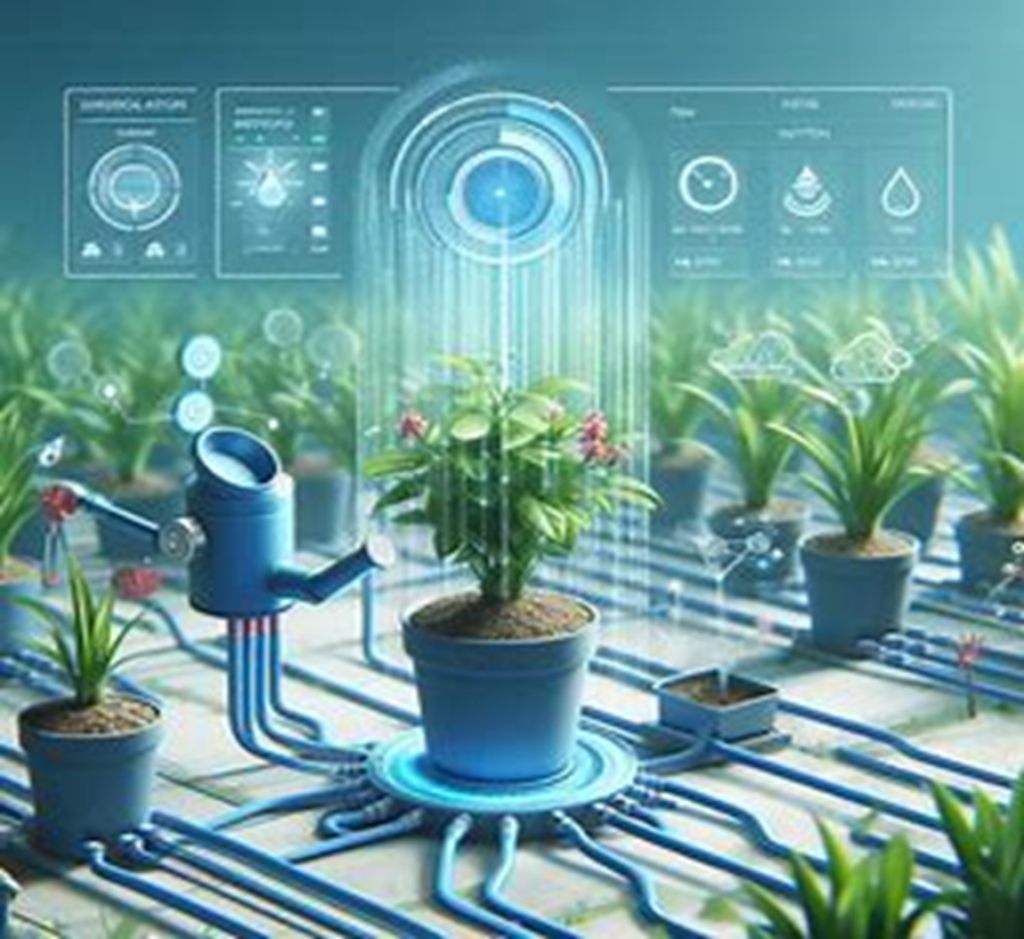
The problem analysis of wireless plant watering studies reveals that non-constant and inefficient watering activities may cause to poor plant health, reduced yields, and unnecessary water wastage in greenhouse environments. Reasons such as different saturation levels of soil, many changes in weather, and observations that are manually conducted lead to these problems. By utilizing sensor technology for the purpose of regularly monitoring levels of moisture, water, and conditions of the weather, the machine can make decisions based on the data it collected and thus sprinkles the specific water required. This technique automated the shortcomings of the past; thus, the flow of the better resource management, overgrowth of plants, and reduced labor costs are the result.
Proposed solution to problems
A solution to the problem of inconsistence and inefficiency in watering in greenhouse conditions is done with the smart plant watering which uses a set of sensors and automation. Soil moisture sensors remain continuously the moisture level, an ultrasonic sensor measures them water level in the tank, and a rain sensor detects precipitation. From the real-time data of these sensors, the system is programmed to open the water pump and the relay only when it is necessary to minimizing irrigation wastage. This lifestyle will help to best water the pot plants, save the water, will cause as low the manual work as possible, and will make the plants grow healthier that will bring up the productivity and sustainability of greenhouse management, respectively.
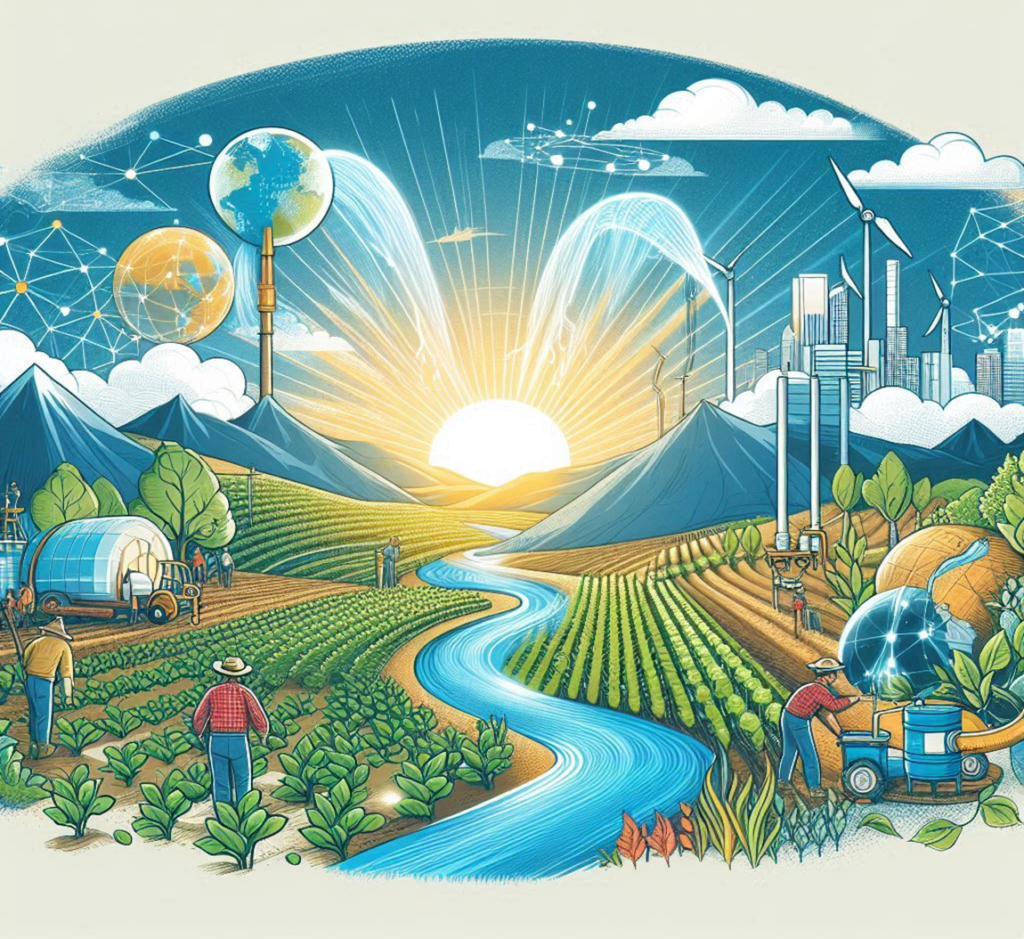
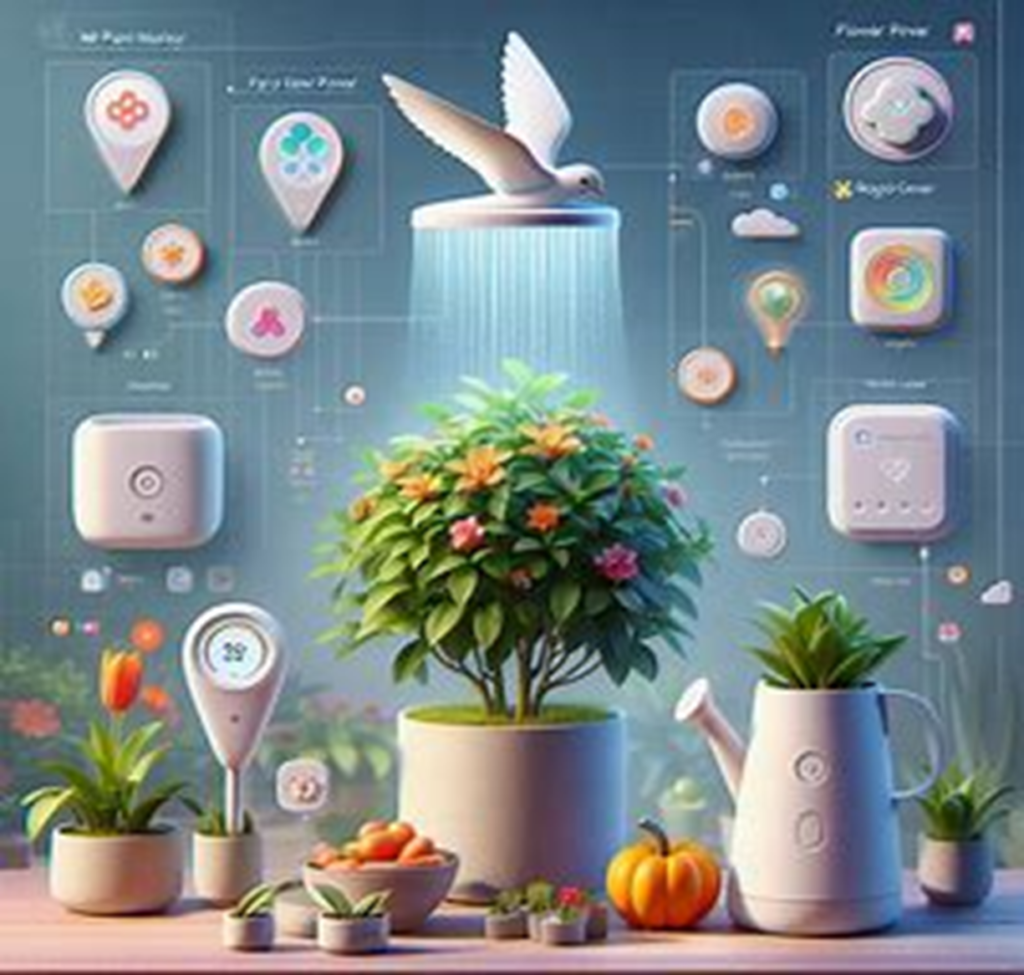
Other products that fit our design and problems with those designs
There are various smart plant watering systems in the market with high prices such as Xiaomi Mi Plant Monitor, Parrot Flower Power and Rachio Smart Sprinkler Controller. These systems do not contain the integration of environmental sensors or provide enough space for the owner, since they are used in indoor pots and substantial outdoor lawns and cannot really be used for greenhouse environments. These devices typically don’t include basic features like soil moisture sensors, automatic watering schedules, and smartphone integration. But they are not subject to different types of environmental sensors such as integration, they are not very user-friendly and, of course, they cannot be installed in greenhouses, but they are limited to indoor pots or large lawns. Cannot be used specifically for greenhouses.
Other products that fit our design and problems with those designs
There are various smart plant watering systems in the market with high prices such as Xiaomi Mi Plant Monitor, Parrot Flower Power and Rachio Smart Sprinkler Controller. These systems do not contain the integration of environmental sensors or provide enough space for the owner, since they are used in indoor pots and substantial outdoor lawns and cannot really be used for greenhouse environments. These devices typically don’t include basic features like soil moisture sensors, automatic watering schedules, and smartphone integration. But they are not subject to different types of environmental sensors such as integration, they are not very user-friendly and, of course, they cannot be installed in greenhouses, but they are limited to indoor pots or large lawns. Cannot be used specifically for greenhouses.
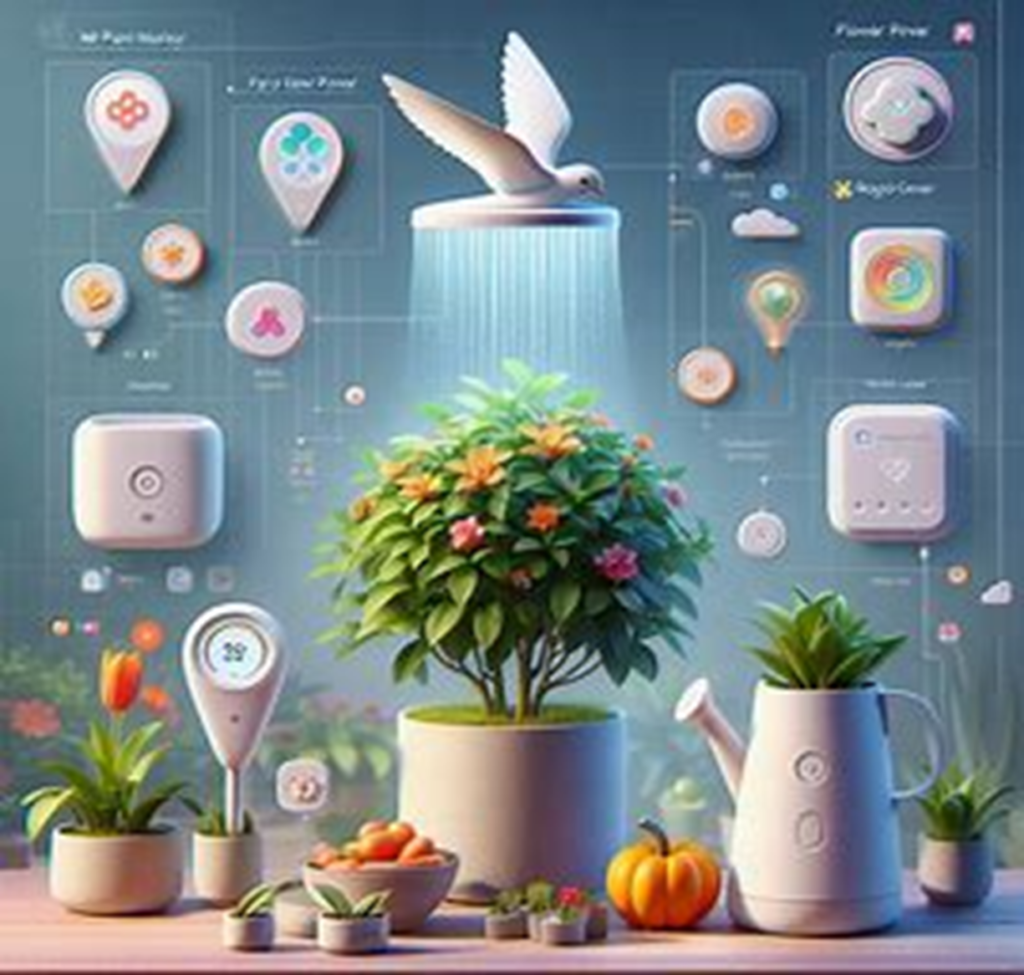
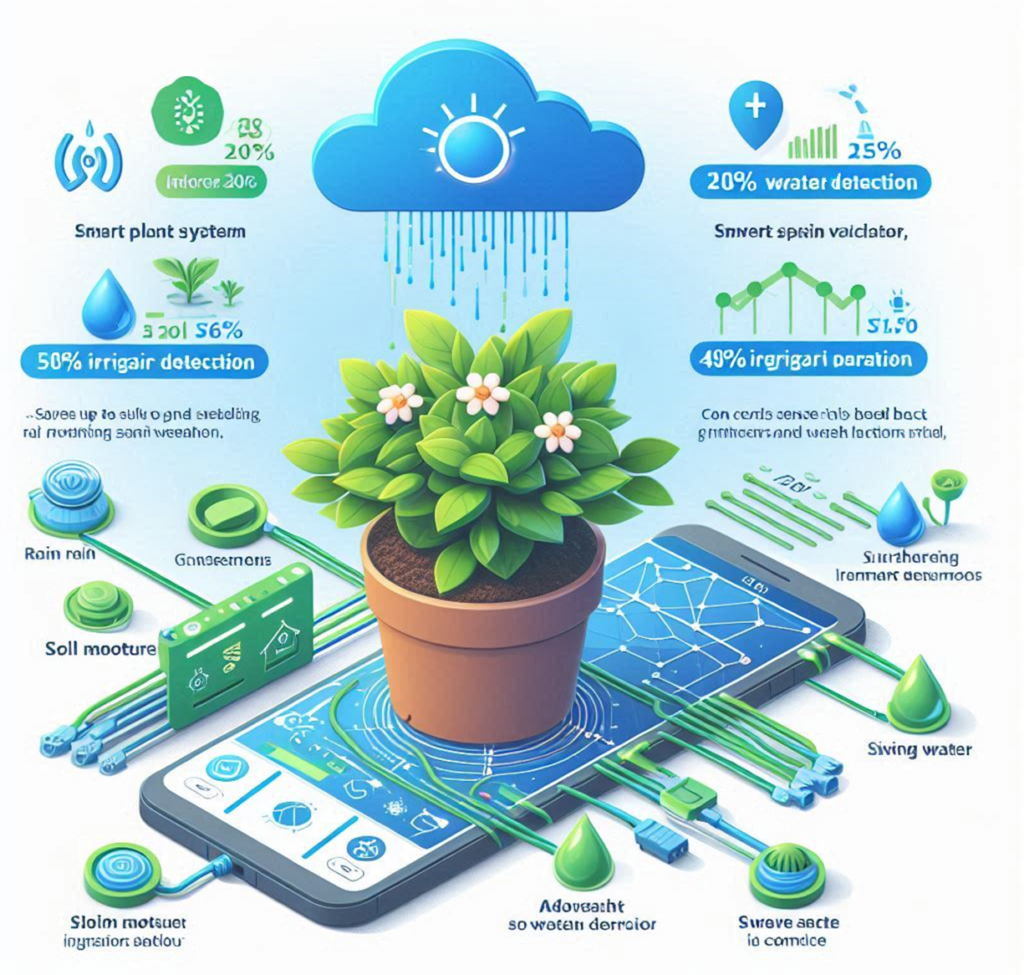
Uniqueness of Smart Plant water supply system by our team
Our Smart Plant Watering System is a one-of-a-kind sensor integration. Our version is not like other smart irrigation systems in the market, because we are the only ones with add-on modules for soil moisture sensor, rain detection sensor, which helps to save up to 20% of water level ultrasonic sensor. 50% of plant irrigation water. The system can control the irrigation process based on the soil moisture level in addition to the water tank level and weather parameters. It makes effective use of rainwater and ensures that the plants are in good condition. Furthermore, the developed web interface real-time monitoring and control system is very flexible and user-friendly. For that reason, it is a versatile and compact device suitable for all types of greenhouses and plants.
Technologies required for the proposed plan
This smart plant watering system leverages a range of technologies to provide an efficient and automated solution for greenhouse irrigation
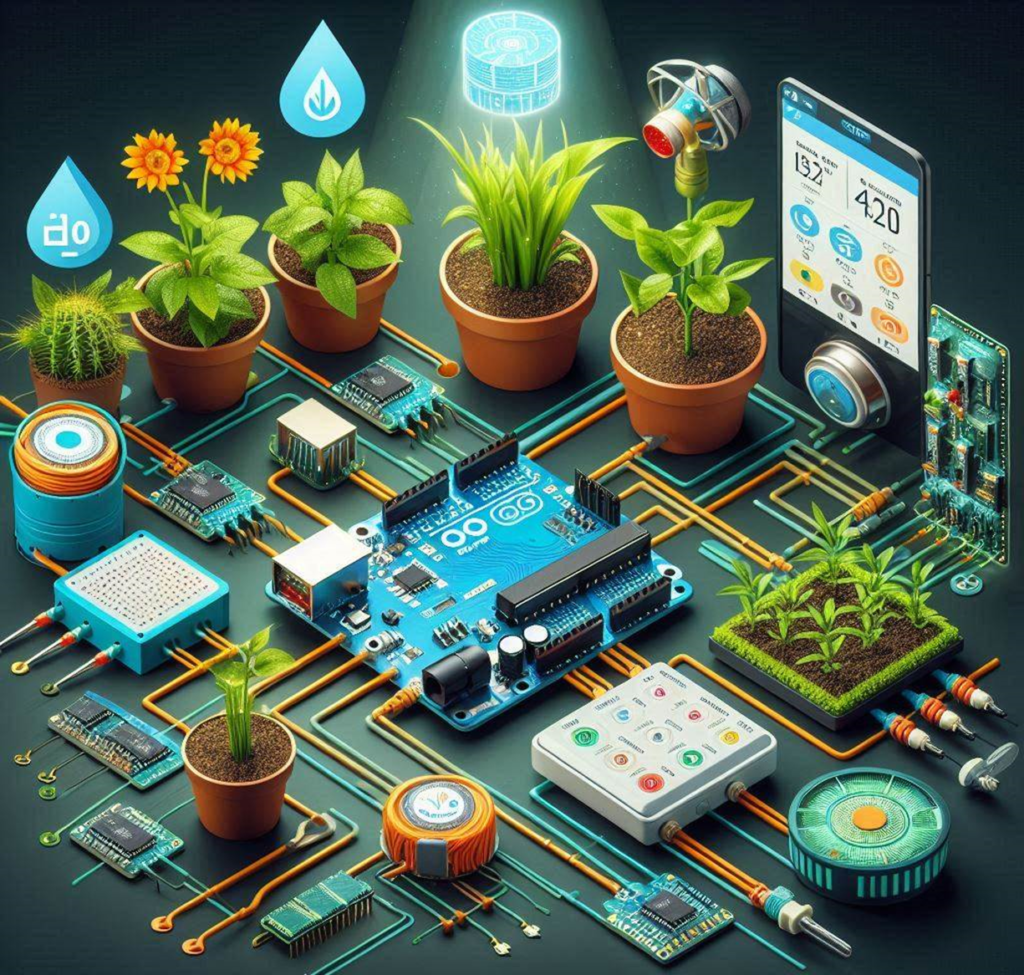
Microcontrollers (Arduino Uno and ESP8266)
The Arduino Uno serves as the primary control unit, processing data from various sensors and executing the irrigation logic.
The ESP8266 microcontroller provides Wi-Fi connectivity,
enabling real-time data transmission and remote monitoring through a web interface.

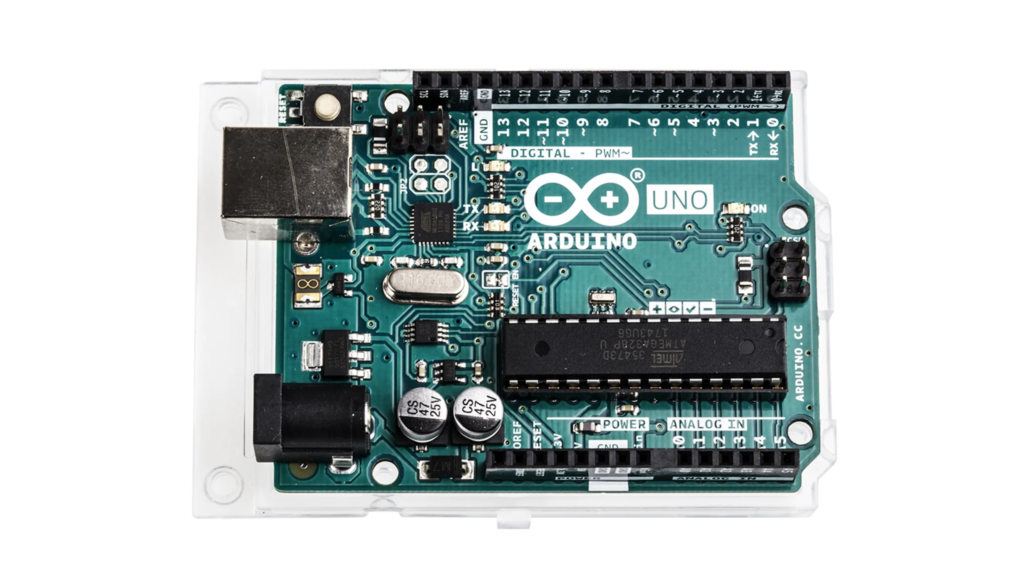
Sensors

Soil Moisture Sensor
Measures the moisture content in the soil to determine when watering is needed.

Ultrasonic Sensor
Measures the water level in the storage tank to ensure there is sufficient water available for irrigation.
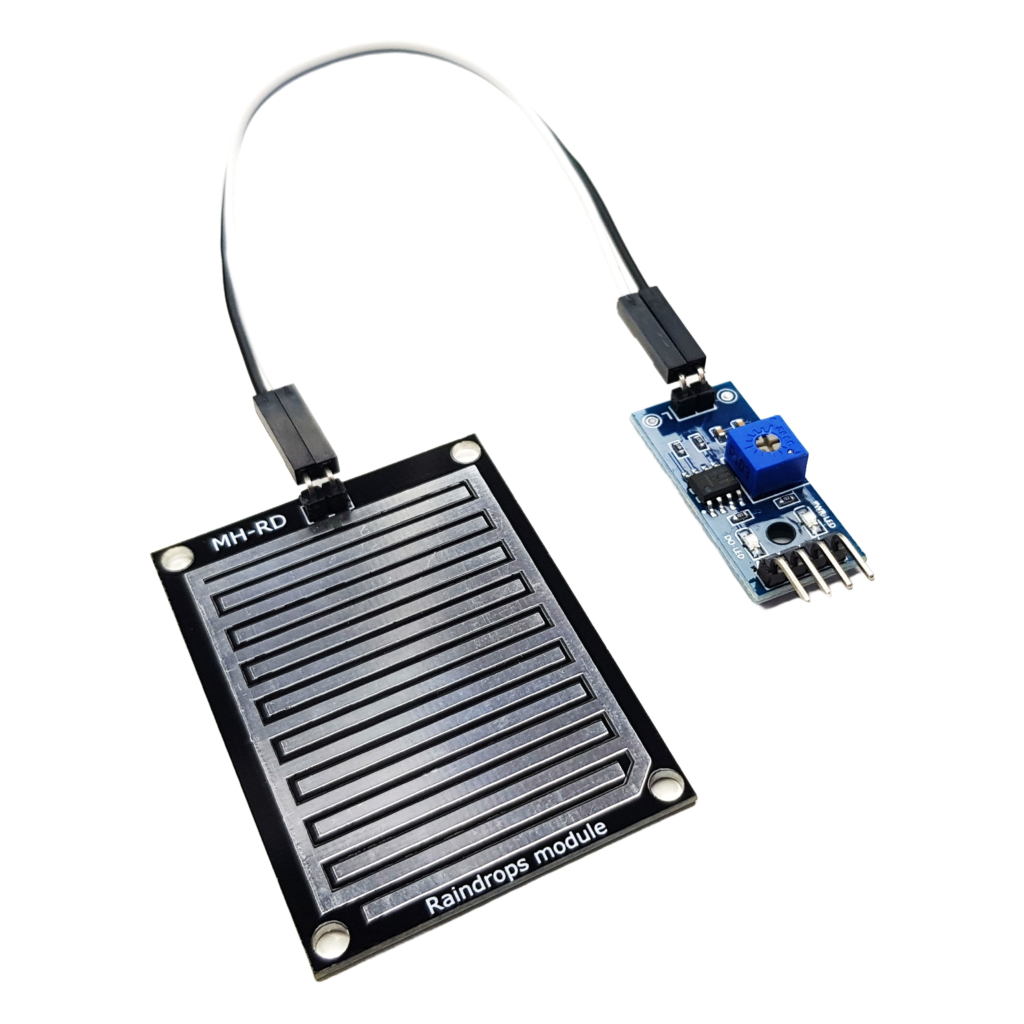
Rain Sensor
Detects rainfall, allowing the system to adapt its watering schedule based on current weather conditions.
Relay Module
Acts as a switch to control the water pump and other devices based on signals from the Arduino. The relay module is used to turn the pump on or off, ensuring precise irrigation based on sensor readings.

Water Pump
The soil moisture sensor is an electric pump controlled by a relay module that supplies water to the plants and fills the water tanks when it detects low moisture levels.

Web Interface
A user-friendly web-based dashboard is hosted on the ESP8266, allowing users to monitor real-time sensor data, adjust system settings, and manually control the irrigation system remotely from any internet-connected device

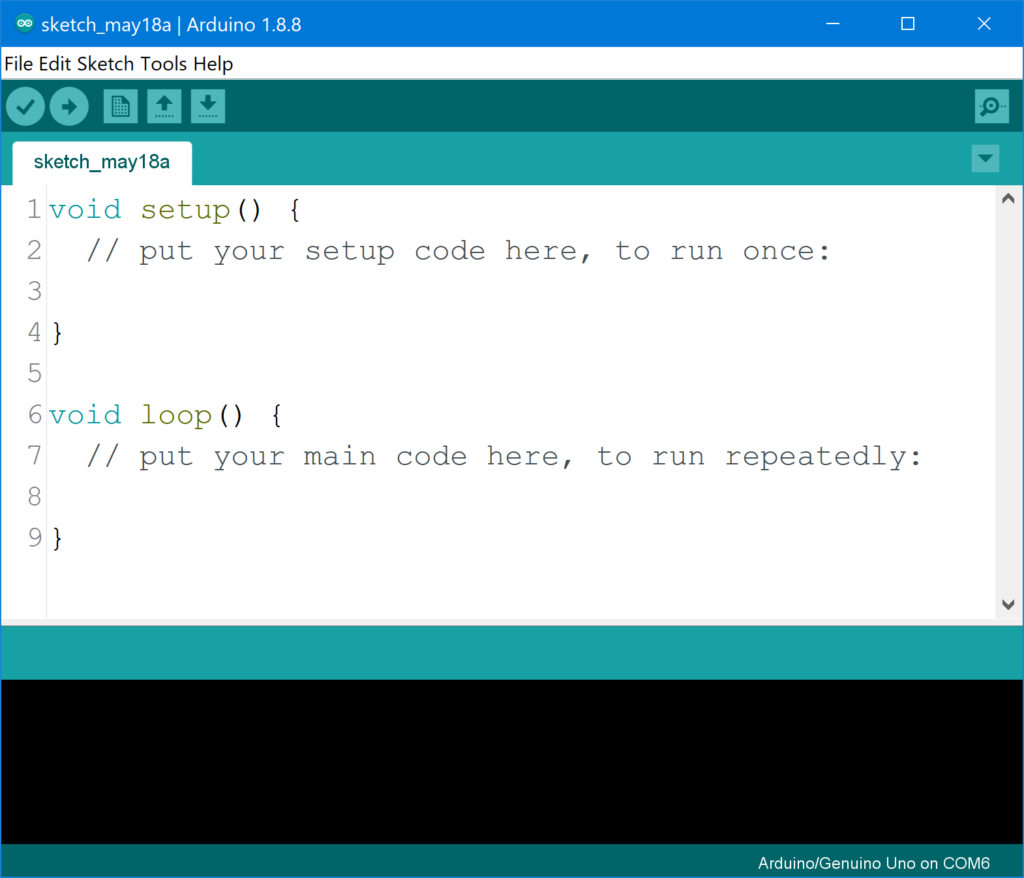
Software Programming (Arduino IDE)
The system is programmed using the Arduino Integrated Development Environment (IDE) with code written in C/C++. The software integrates sensor data, executes the control logic, and communicates with the web interface via the ESP8266.
Internet of Things (IOT)
By connecting the system to the internet, users can monitor and control the greenhouse irrigation remotely, making the system a part of the growing IOT ecosystem.

User Scenario
Advantages that this smart plant watering system gives to farmers, especially for those who are engaged in greenhouse cultivation or large-scale cultivation, are:
- Water Usage Effectively :- Real-time soil moisture and weather are managed with precision. Irrigation only occurs when it is necessary. Water will not be wasted, and it saves this precious liquid, which becomes very crucial in places with frequent droughts.
- Improved Plant Health and Yield :- By maintaining optimum soil moisture, the system promotes healthy plant growth and minimizes the potential diseases that could be due to over-watering or under-watering. This indeed leads to higher yields and better quality of crops.
- Labor and Operation Costs Reduction : – Automation in the watering process eases a farmer’s burden while monitoring and performing irrigation manually, hence reducing labor costs while giving farmers much more time to handle other important tasks. Very helpful on big farms where doing irrigation manually is really time-consuming.
- 4. Real-time Monitoring and Control :- The web-based system puts up real-time data for farmers to monitor the situation in their fields from anywhere in the world. In addition, it allows farmers easily to modify irrigation schedules, water level checks, and take heed of any alerts for further flexibility in their activities.
- Weather Compatibility :- The rain sensor will enable the system to automatically adjust the irrigation schedule, considering rainfall. This helps conserve more water and avoids overwatering the plants during rainfall.
- Low Cost and Scalable :- The proposed system is built around low-cost hardware, such as Arduino, ESP8266, and various sensors. It can easily be scaled up by the farmer whenever the need arises for coverage of more plants or wider areas.
- Improved Sustainability :- The system ensures improved water usage with less waste, making farming even more sustainable. Therefore, it helps the farm in two major ways-on-site control and keeping up with increasingly restrictive new legislations or water conservation practice.
- Early Problem Detection :- The system sensors will keep monitoring the conditions in the soil and environment. It is bound to provide an opportunity for early detection of impending problems, such as low levels of water or insufficient moisture in the soil. This proactive outlook provides the opportunity for obstruction of problems before they have adverse effects on health or yield in crops.
The smart plant watering system is a tool meant for farmers to enhance their productivity, ensure cost-effectiveness, and contribute to sustainable farming.
